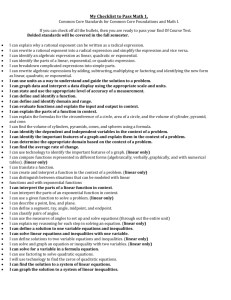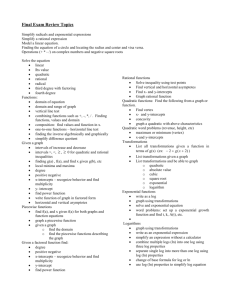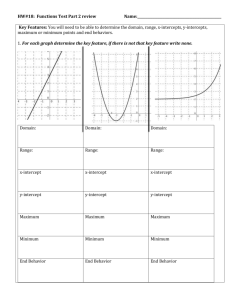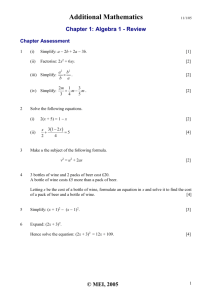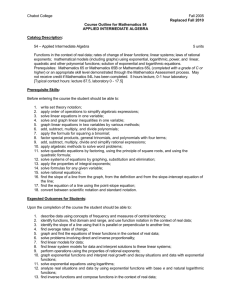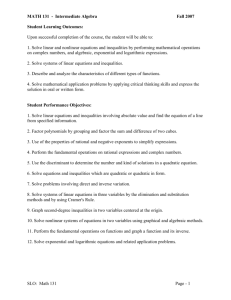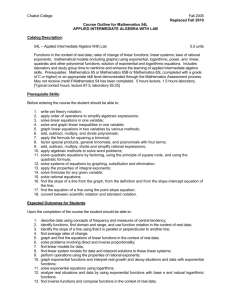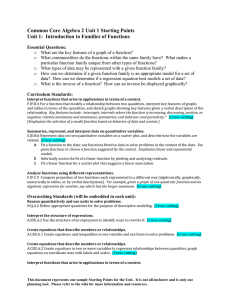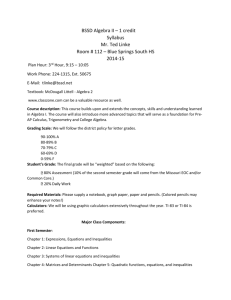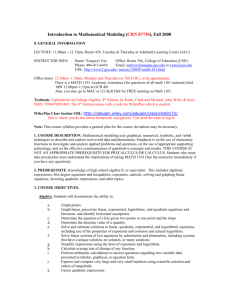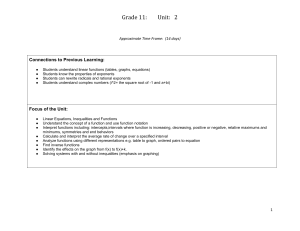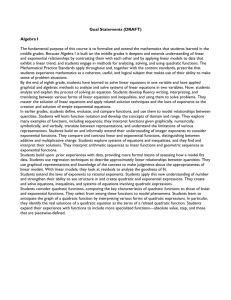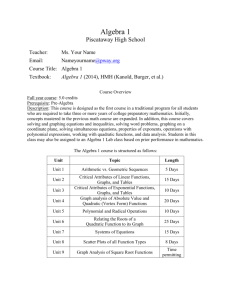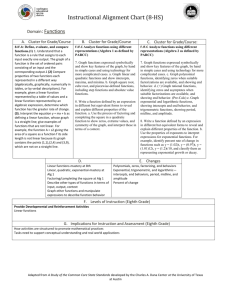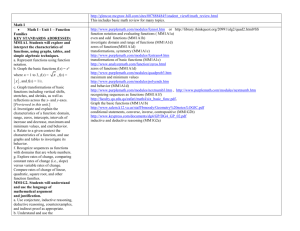EOCT Study Guide Topic Checklist
advertisement
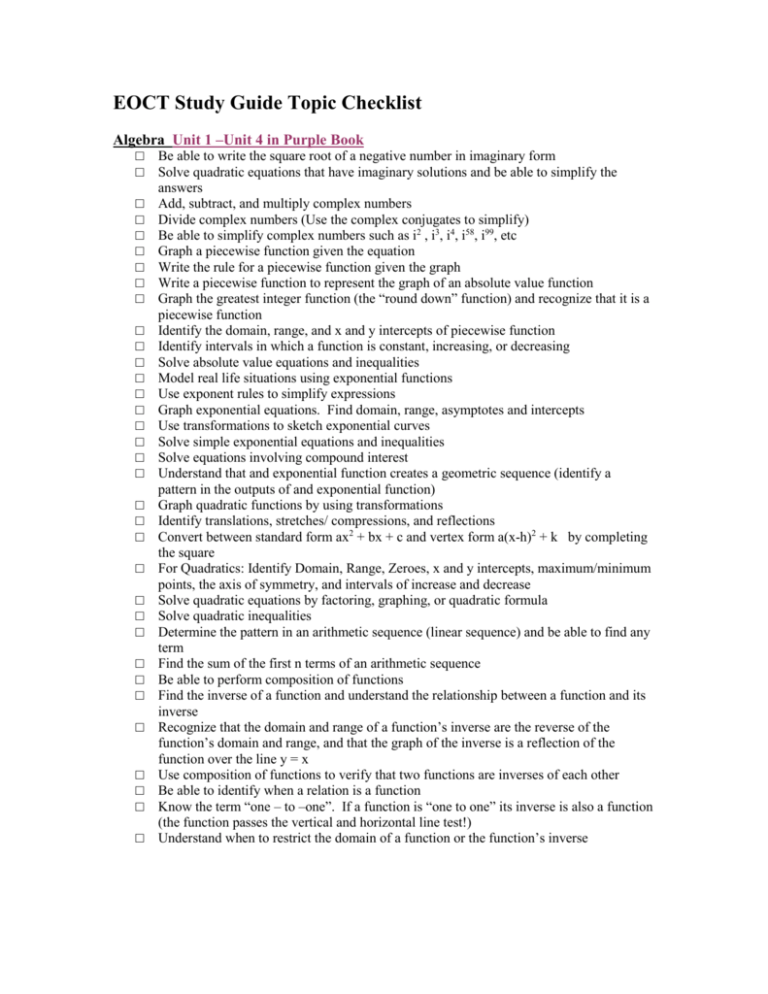
EOCT Study Guide Topic Checklist Algebra Unit 1 –Unit 4 in Purple Book □ □ □ □ □ □ □ □ □ □ □ □ □ □ □ □ □ □ □ □ □ □ □ □ □ □ □ □ □ □ □ □ □ □ Be able to write the square root of a negative number in imaginary form Solve quadratic equations that have imaginary solutions and be able to simplify the answers Add, subtract, and multiply complex numbers Divide complex numbers (Use the complex conjugates to simplify) Be able to simplify complex numbers such as i2 , i3, i4, i58, i99, etc Graph a piecewise function given the equation Write the rule for a piecewise function given the graph Write a piecewise function to represent the graph of an absolute value function Graph the greatest integer function (the “round down” function) and recognize that it is a piecewise function Identify the domain, range, and x and y intercepts of piecewise function Identify intervals in which a function is constant, increasing, or decreasing Solve absolute value equations and inequalities Model real life situations using exponential functions Use exponent rules to simplify expressions Graph exponential equations. Find domain, range, asymptotes and intercepts Use transformations to sketch exponential curves Solve simple exponential equations and inequalities Solve equations involving compound interest Understand that and exponential function creates a geometric sequence (identify a pattern in the outputs of and exponential function) Graph quadratic functions by using transformations Identify translations, stretches/ compressions, and reflections Convert between standard form ax2 + bx + c and vertex form a(x-h)2 + k by completing the square For Quadratics: Identify Domain, Range, Zeroes, x and y intercepts, maximum/minimum points, the axis of symmetry, and intervals of increase and decrease Solve quadratic equations by factoring, graphing, or quadratic formula Solve quadratic inequalities Determine the pattern in an arithmetic sequence (linear sequence) and be able to find any term Find the sum of the first n terms of an arithmetic sequence Be able to perform composition of functions Find the inverse of a function and understand the relationship between a function and its inverse Recognize that the domain and range of a function’s inverse are the reverse of the function’s domain and range, and that the graph of the inverse is a reflection of the function over the line y = x Use composition of functions to verify that two functions are inverses of each other Be able to identify when a relation is a function Know the term “one – to –one”. If a function is “one to one” its inverse is also a function (the function passes the vertical and horizontal line test!) Understand when to restrict the domain of a function or the function’s inverse Geometry Unit 5 and 6 in Purple Book □ Memorize and use the ratios of a 30-60-90 triangle ( x, x 3, 2 x ) □ Memorize and use the ratios of a 45-45-90 triangle ( x, x, x 2 ) □ Solve a right triangle using sine, cosine, and tangent □ Be able to sketch a real life situation using angle of elevation and angle of depression □ Know all circle rules! See below x x y y □ Find the length of an arc or area of a circle sector using proportions □ Find the surface area and volume of a sphere □ Determine the effect on surface area and volume of doubling, tripling, etc the radius of the sphere Data Analysis and Probability Unit 7 in Purple Book □ Calculate mean, median, mode, standard deviation, and mean absolute deviation □ Be able to estimate means and standard deviations from graphs and charts □ Understand stem and leaf plots, histograms, box and whisker plot □ Understand the central limit theorem (The standard deviation of a population is larger than the standard deviation of a group of sample means taken form the population x □ □ □ □ ) n Model a data set using a linear or quadratic function. Be able to find the function when given a table of values Calculate the median-median line by hand Understand positive and negative, weak and strong correlation Distinguish between correlation and causation

